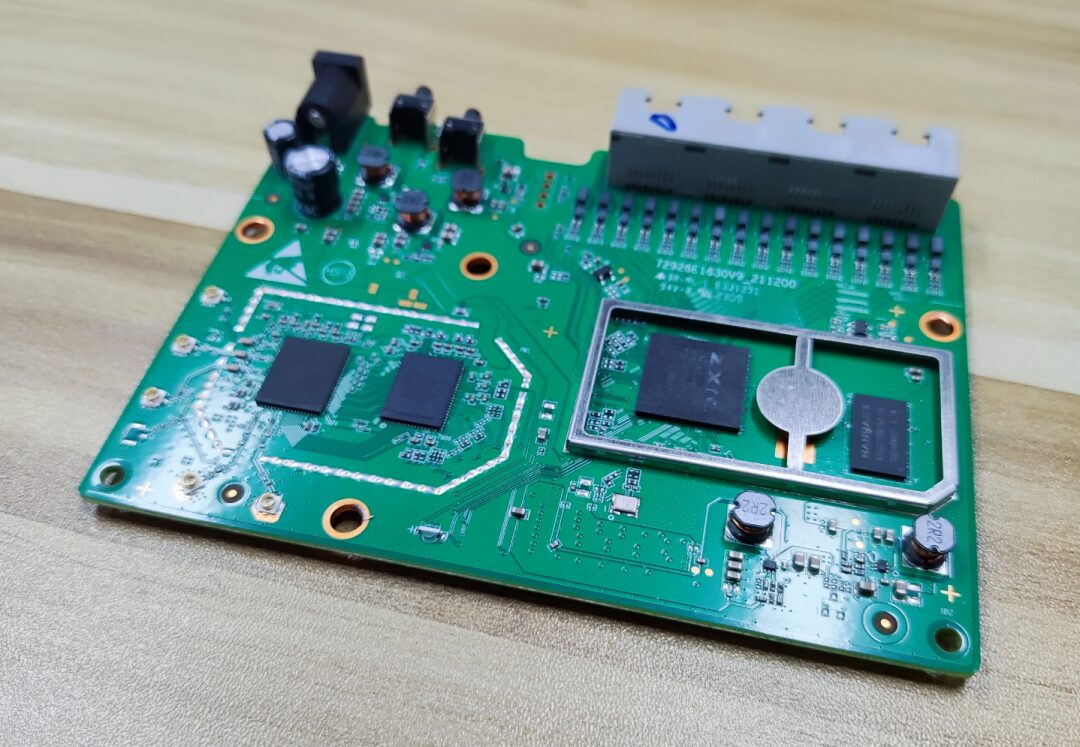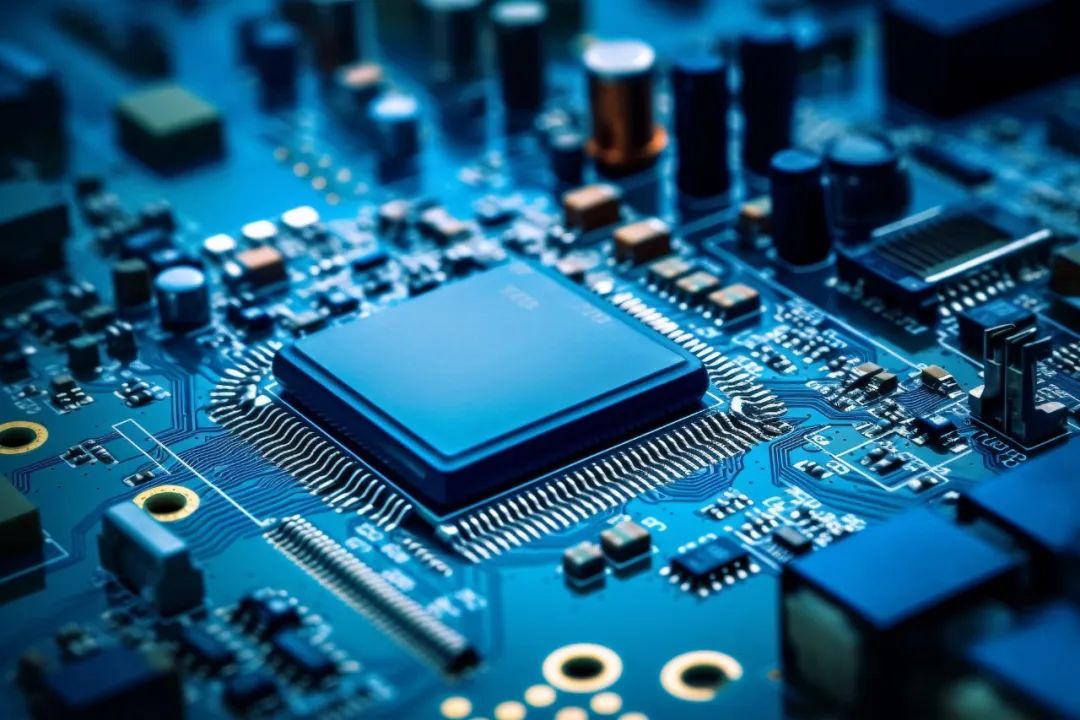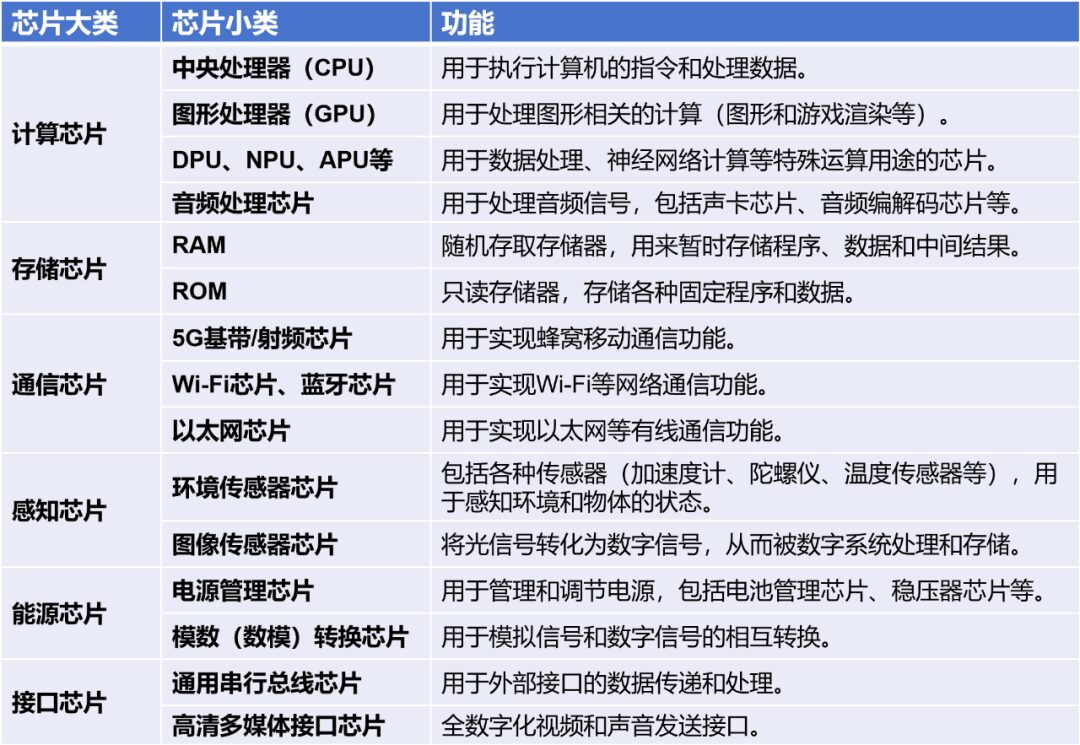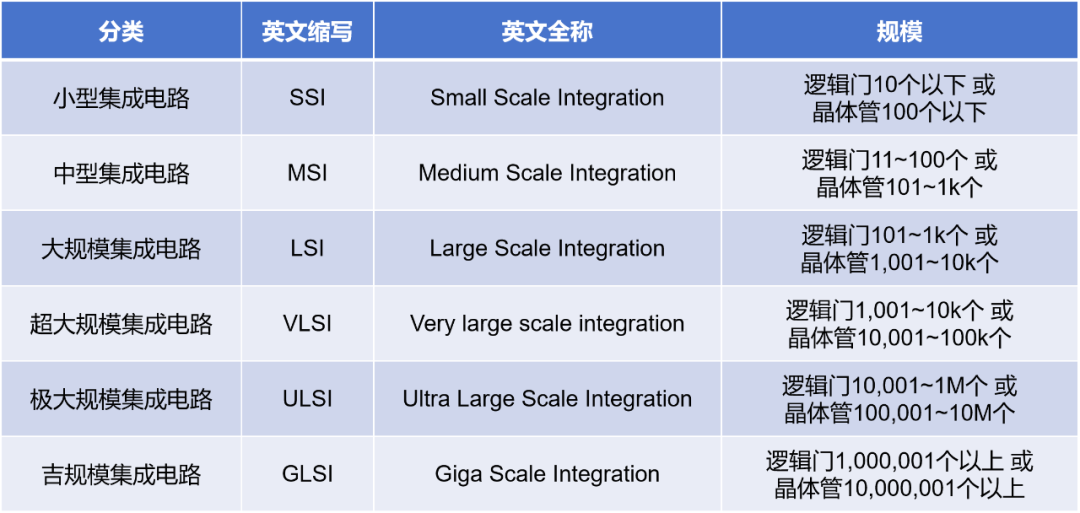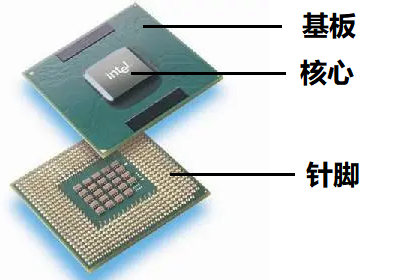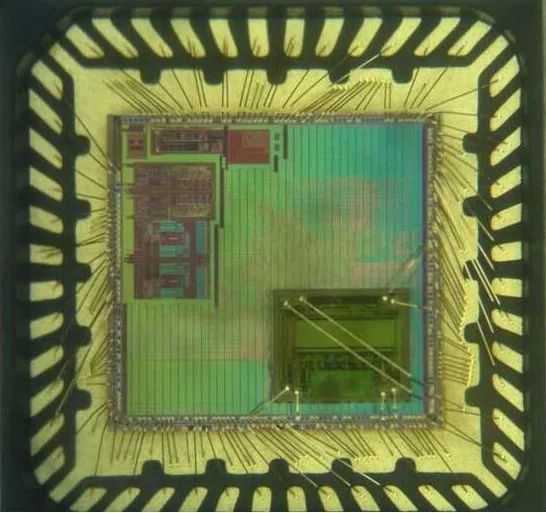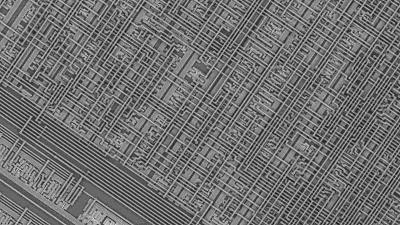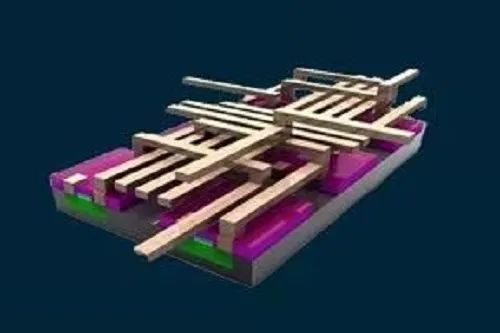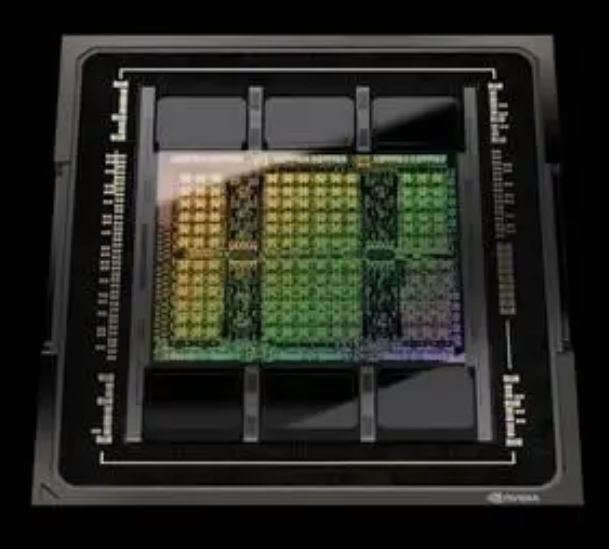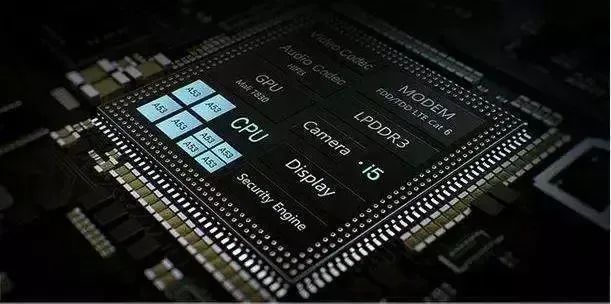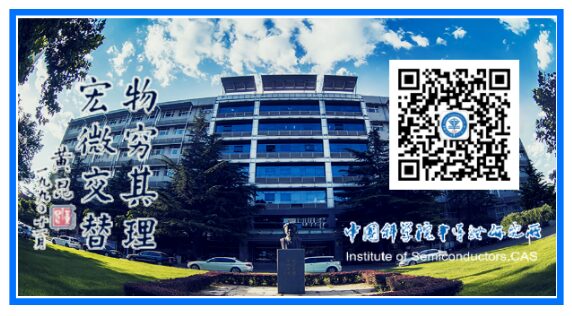Source: Xianzao Classroom
Original Author: Little Date Jun
To help more beginners interested in semiconductors get started, here is a brief introduction to some knowledge related to chips.
In our daily work and life, we often use various electronic or electrical products, such as computers, mobile phones, televisions, refrigerators, washing machines, etc.
If we take these products apart, we will see a green board similar to the one below.
Sometimes it can be blue or black.
Everyone knows that this green board is called a circuit board. A more official name is a printed circuit board, or PCB (Printed Circuit Board; in some foreign contexts, it is also called PWB, Printed Wire Board).
On the PCB, many electronic components are soldered, such as capacitors, resistors, inductors, etc.
We can also see some black square components.
That’s right, this component is likely a chip (referred to as “chip” in English).
A chip is actually a relatively general term.
For electronic devices, it is hidden inside and very important, equivalent to the engine of a car or the heart of a person, hence the term “core”. In terms of shape, it is in pieces, so it is called “chip”. Together, it is “chip”.
Generally speaking, a chip is an integrated circuit (integrated circuit). The two can be equated and used interchangeably.
Integrate circuits are relatively easy to define. By using specific technologies, transistors, resistors, capacitors, diodes, and other electronic components are integrated onto a single substrate, forming a micro-circuit, which is called an integrated circuit.
If this substrate uses semiconductor materials (such as silicon), or if the integrated circuit is made from semiconductor material wafers, it belongs to semiconductor integrated circuits.
In the traditional sense, integrated circuits generally refer to semiconductor integrated circuits. Therefore, sometimes the terms semiconductor, chip, and integrated circuit are often used interchangeably.
If we delve deeper, there are still some differences between chips and integrated circuits.
Some industry opinions suggest:
Integrated circuits are circuits, which are basic units, mainly emphasizing the realization of a certain function, such as a specific logical operation. In circuit design and other scenarios, this term is used more.
On the other hand, chips are a more macro and product-oriented concept. After design, manufacturing, packaging, and testing, they form a directly usable product form, which is considered a chip. When emphasizing usage, people tend to use the term “chip”, such as CPU chips, AI chips, baseband chips, etc.
Some also define chips as: “general semiconductor component products that contain one or more integrated circuits and can achieve certain specific functions”. Or, “chips are a general term for semiconductor component products”.
In comparison, the distinction between semiconductors and integrated circuits is clearer:
Semiconductors include: integrated circuits + discrete devices + optoelectronic devices + sensors.
The main distinction between integrated circuits and the other three lies in integration. The number of transistors in integrated circuits far exceeds that of discrete devices, optoelectronic devices, and sensors. Additionally, the substrate materials are generally different.
Currently, the combined market size of optoelectronic devices, discrete devices, and sensors accounts for only about 10% of the total semiconductor market size.
Thus, we can say: Integrated circuits are the most important component of semiconductors.
█ Classification of Chips
A chip is a set of circuits that implement specific functions. It has a modular characteristic, allowing manufacturers to quickly design and develop products, reducing development difficulty and shortening development cycles.
For decades, semiconductor technology has rapidly developed under the guidance of Moore’s Law, with chip sizes getting smaller and accommodating more circuits, significantly reducing the size, cost, and power consumption of electronic products.
It has not only improved our quality of life but also led the information technology revolution and promoted the progress of human civilization.
With chips, we have mobile phones.
Today, chips have formed a very wide range of applications and have given rise to many categories.
The classification method of the World Semiconductor Trade Statistics (WSTS) organization is relatively authoritative and official. They classify all integrated circuit categories into: analog, micro, logic, and memory.
On an unofficial level, the classification is more arbitrary.
By function, we often classify chips into: computing chips, storage chips, communication chips, sensing chips, energy chips, and interface chips.
Some chip types we are familiar with include:
By grade, chips can also be divided into consumer-grade, industrial-grade, automotive-grade, military-grade, and aerospace-grade, etc. By design philosophy, they can be divided into general-purpose chips (CPU, GPU, etc.) and dedicated chips (ASIC).
We can also classify them by process technology, such as the commonly heard 28nm, 14nm, 7nm, 5nm. Or, by semiconductor materials, such as silicon (Si), germanium (Ge), gallium arsenide (GaAs), gallium nitride (GaN, etc. These will be introduced later when discussing the chip manufacturing process.
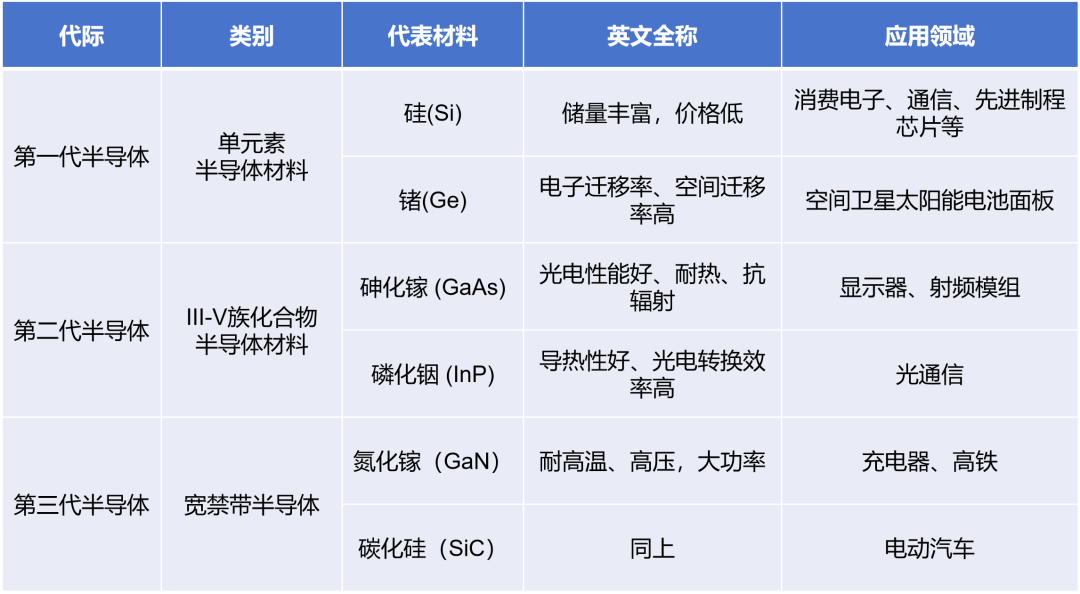
In fact, now we have developed optical chips (for example, silicon photonics technology), using light to replace current to transmit signals, in addition to electronic chips.
From the perspective of integrated circuits, there are many classifications.
By manufacturing process, integrated circuits can be divided into semiconductor integrated circuits and film integrated circuits (film integrated circuits use metals and ceramics, etc.). Film integrated circuits can be further divided into thick-film and thin-film integrated circuits.
By circuit properties, we can also classify them into digital integrated circuits, analog integrated circuits, and mixed-signal integrated circuits.
Digital integrated circuits, as the name implies, process digital signals. They appear most frequently around us, such as microprocessors (CPU, GPU, etc.), digital signal processors (DSP), and microcontrollers (MCU), all of which are digital integrated circuits.
Analog integrated circuits are more often used in sensors, power chips, operational amplifiers, etc., mainly for amplifying, filtering, demodulating, and mixing analog signals.
Mixed-signal integrated circuits integrate both analog and digital circuits on a single chip. You can probably guess that analog-to-digital (ADC) and digital-to-analog (DAC) conversion chips belong to this category.
By the number of microelectronic devices integrated on the chip (scale), integrated circuits can be classified into the following categories:
More professionally, by conductivity type, integrated circuits can be divided into bipolar integrated circuits and unipolar integrated circuits.
Bipolar integrated circuits have complex manufacturing processes and higher power consumption, with representative integrated circuits including TTL, ECL, HTL, LST-TL, STTL, etc.
Unipolar integrated circuits have simpler manufacturing processes, lower power consumption, and are easier to make into large-scale integrated circuits, with representative integrated circuits including CMOS, NMOS, PMOS, etc.
The above terms will be explained in detail when we discuss the working principles of chips later.
█ Internal Structure of Chips
Earlier, we mentioned that chips appear as black square pieces.
Sometimes, they also have a silver metal cover (to enhance protection and aid heat dissipation). For example, our CPU:
CPU Appearance
Chips are formed after packaging (a step in the chip manufacturing process).
We need to remove the “shell” to truly see the internal core of the chip. When viewed under a microscope, it looks like this:
The outer circle consists of pins (pins). The thin lines are the leads. The square part in the middle is the actual circuit of the chip.
If we continue to magnify it, it looks like this:
In 3D effect, it looks like this:
Indeed, there are many layers, densely packed, resembling a super maze or a futuristic city.
In the image, each line represents a connection. The objects they connect to are transistors.
The number of transistors in a chip usually represents its capability. The more transistors, the more circuits, and the stronger the functionality and computing power. Many manufacturers emphasize the number of transistors in their chips, which is what this means.
NVIDIA’s H100 GPU has 80 billion transistors.
Chips can be simple (relatively speaking) or complex. Some complex chips are further divided into different functional modules. These modules together form a system, becoming SoC (System on Chip, integrated system, system-level chip).
Our mobile phone main chips, such as Qualcomm Snapdragon, MediaTek Dimensity, and Huawei Kirin, are typical SoC chips. The chip includes CPU, GPU, APU, ISP, baseband, RF, etc.
END
Reprinted content only represents the author’s views
Does not represent the position of the Semiconductor Institute of the Chinese Academy of Sciences
Editor: Schrödinger’s Cat
Editor-in-chief: Jiang Yu
Submission Email: [email protected]
Recommended Previous Articles
1. The Semiconductor Institute has made progress in research on bionic coverage neuron models and learning methods.
2. The Semiconductor Institute has made significant progress in inverted structure perovskite solar cells.
3. A review of the development history of semiconductors in New China – “Through hardships for decades, the light boat has passed through thousands of mountains”
4. What exactly is 7nm in chips?
5. Silicon-based integrated optical quantum chip technology.
6. How anomalous is the quantum anomalous Hall effect? It may lead to the next information technology revolution!
